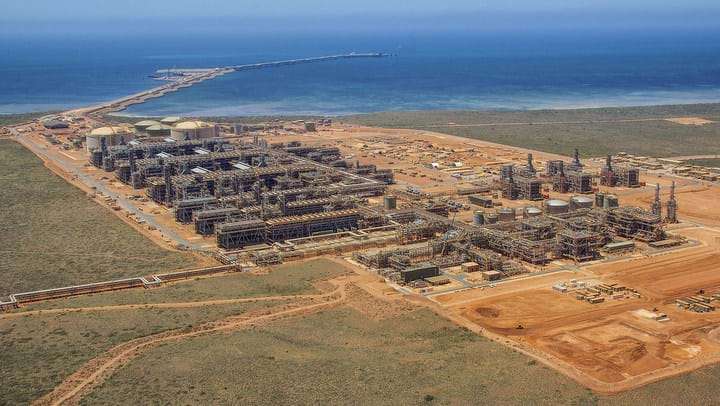Gorgon LNG project faces emissions penalties

CHEVRON’s Gorgon liquefied natural gas (LNG) project, one of the world’s largest LNG projects, could be facing penalties following delays to the company’s carbon dioxide (CO2) injection system at the Gorgon site on Barrow Island, off the coast of Western Australia (WA).
The CO2 injection system was a key foundation for the approval of the Gorgon project on Barrow Island, according to the Chair of WA’s Environmental Protection Agency (EPA) Tom Hatton. The authorisation of the project includes conditions to capture and store 100% of reservoir CO2 from gas processing operations, and at least 80% of CO2 from operations over a five-year rolling average.
The news follows an enquiry by WA’s EPA aimed at determining a date from which Chevron would be accountable for its CO2 injection system. WA’s Minister for the Environment, Stephen Dawson, requested the enquiry after Chevron’s 2017 annual environmental reporting for Gorgon showed that no CO2 had been injected using the system.
Following the enquiry, the EPA has recommended that the starting point for the injection system should be the date when Chevron was issued its first licence for gas processing operations by the Gorgon project, which was 14 July 2016.
After a two-year delay due to technical issues, Chevron’s CO2 injection system became operational in August 2019.
According to The Australian, Chevron argued that the project should only be considered to have reached routine production in July 2018, when the last of Gorgon’s three LNG processing trains officially started up.
In its report the EPA disagreed with the argument that operations do not commence until all stages of the proposal are constructed and operating at full capacity.
It said: “If the view is taken that routine or steady state operations are not achieved until all processing trains are in production then it is possible to construct the view that ‘operations’ may never commence if plans exist for future trains to come online.”
Chevron has received authorisation to construct a fourth gas processing train for the Gorgon LNG project.
If Dawson agrees with the EPA’s decision, Chevron will be responsible for the CO2 emissions from the Gorgon LNG project in the three years prior to the CO2 injection system becoming operational.
According to Reuters, Chevron may have to pay penalties for Gorgon’s carbon emissions. The report adds that Dawson’s spokesperson said that it is too early to say what penalties Chevron might face in this event.
The Australian reports that Chevron said: “As the inquiry process is continuing, we are not in a position to comment until the Minister makes his determination.”
“We are committed to meeting our regulatory obligations and reducing greenhouse gas emissions from our operations.”
Dawson will make the final decision on changing the implementation conditions. The Department of Water and Environment Regulation will be responsible for the compliance and enforcement of the conditions in Ministerial Statement 800, under which the Gorgon LNG project is authorised.
Reportedly, Dawson said he would make a decision in due course.
According to Reuters, the Gorgon project is the biggest contributor to carbon emissions of Australia’s ten LNG plants, which have been the main driver behind increasing emissions in Australia for the past two years.
Chevron’s CO2 injection system is expected to reduce Gorgon’s emissions by 40%, storing 100m t of CO2 over the project’s lifetime. With the CO2 injection system and at steady-state operations, Gorgon is expected to have the lowest greenhouse gas emissions intensity of any Australian LNG.
The Gorgon LNG project is owned and operated by Chevron Australia (47.3%). Its partners include ExxonMobil (25%), Shell (25%), Osaka Gas (1.25%), Tokyo Gas (1%), and JERA (0.417%).
Recent Editions
Catch up on the latest news, views and jobs from The Chemical Engineer. Below are the four latest issues. View a wider selection of the archive from within the Magazine section of this site.




